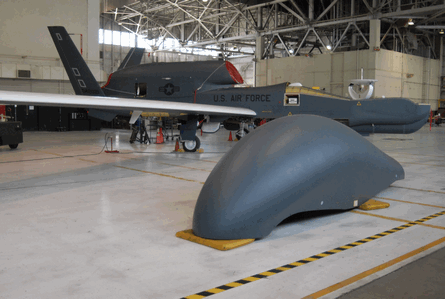The US Air Force has accepted that four Northrop Grumman RQ-4 Block 30 unmanned aircraft systems (UAS) are now ready to maintain one orbit of continuous surveillance over a 30-day period.
That declaration on 12 August of initial operational capability (IOC) means the program has overcome some of the USAF's concerns about reliability of the Block 30 variant's equipment.
But USAF officials also signaled the program's performance is still under scrutiny, with Air Combat Command (ACC) General William Fraser warning that "there is still much to be done" before the program achieves full operational capability.
 |
|---|
© USAF |
Reaching that milestone is still six years away and requires Northrop to prove that the Block 30 fleet can maintain six continuous orbits of four aircraft each over a 30-day period, according to ACC. All six orbits must be performed simultaneously, forming a continuous surveillance presence all over the world.
Meeting that standard requires not only the delivery of 24 aircraft, but the ability to sustain a continuous cycle of surveillance missions all over the world.
Northrop has delivered 11 Block 30s to the USAF so far, but only four have proven reliable enough to meet the USAF's definition for an operational system.
Achieving that standard is critical for the USAF's plan to begin retiring the Lockheed Martin U-2 Dragon Lady surveillance fleet. The service's 33 U-2s should be retired from 2015-2016.
The Block 30 RQ-4 is equipped with high-resolution surveillance cameras and signals intelligence receivers.
Earlier this year, USAF officials cited performance shortfalls with the Block 30 system. The USAF reduced planned buys of the Block 40 variant to fund reliability improvements with the Block 30 system.
Operational tests also revealed the Block 30 was performing below the USAF's standards for reliability. Depsite these concerns, the RQ-4 fleet, including the Block 30s, have been actively engaged in operations all over the world for a few years. In the past several months, RQ-4s have supported surveillance missions over combat operations in Libya, as well as humanitarian flights over Japan, Haiti and parts of the US.
- All the latest news, video and images from AUVSI 2011
Source: Flight Daily News























